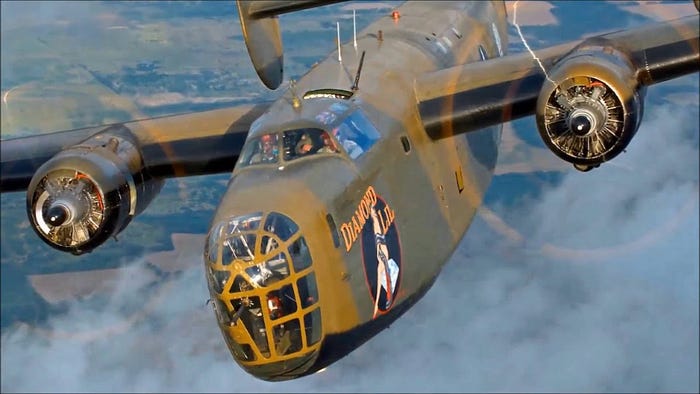The B-24 ( Liberator) Heavy Piston Engine Bomber and its lease of Life with the Indian Air Force.

The B-24 was a US-made heavy bomber that was used to operate from the airfield of Assam in India against the Japanese positions in China. The Liberators operated from Chubua, Kumbhigram, and Jorhat airfields.
The B-24 was a strike bomber of the US Air Force and saw service during World War II. It is not as famous as the B-29 but in its own right, it was a formidable machine. It was a heavy bomber with 4 piston engines and a range of 3000 miles. Tens of liberators were operated by the USAAF in India during the war. After the war, the US handed over the planes to RAF and exited from India.
Most of these planes were collected by the RAF at Kanpur airfield and dumped there. The RAF technicians were responsible to make the machines unfit for flight as per the lend-lease agreement. At the end of the war in 1945/46, the RAF airmen were eager to get back home and just abandoned the machines at Kanpur by making some minor defects in the machines to make them unfit for flying. The machines remained at Kanpur till 1948.
In 1948 The IAF which had been aware of these abandoned at Chakeri airfield near Kanpur since1946 decided to cannibalize them and create their own bomber fleet. The RAF technicians had disabled the machines as they could not be taken back to the UK. They had not done a thorough job and the machines were just parked and left with some minor defects.
The IAF technicians surveyed the airfield and were wonderstruck at the treasure made available to them.

Making the Liberator fit for flight
The planes were examined by engineers from the IAF and they were of the opinion that the planes could be made fit for flying by cannibalization. A team of aero engineers came from Hindustan Aeronautics and work began to make the machines airworthy. It is a tribute to Indian skills that about 50 B-24 were made airworthy and inducted into the IAF. All credit to Jamshed Kaikobad (Jimmy) Munshi the chief test pilot of HAL who played a major part in testing the machines. The liberators were made airworthy and flown to Bangalore where at the HAL factory they were made fully serviceable. No parts were imported as parts from about 20 B-24s were cannibalized and used. In all the IAF could make about 50 liberators airworthy.
News of the Liberators in service with the IAF reached the Americans. This surprised them and they suspected that the Indians may have purchased them from some rogue nation. To allay their fears a team from the USA Air Force was invited to have a look. The team came in 1951 and was impressed with the way the Liberators had been restored.
Liberator in service with IAF
The IAF equipped No 5 and 16 Squadrons with the Liberators and these served with the IAF till 1968. They were used in the Goa operations in 1961 but missed out on operations against China in 1962 as the IAF was not used then as per instructions of Nehru, who did not want the conflict to escalate.
The Liberator photographed Mount Everest. These were the first aerial photographs of the mighty mountain ever from the air. During the 1965 war, the liberators were used for sea surveillance of the Arabian Sea and the Bay of Bengal. The plane was ideally suited for this work because of its immense range of operation.

Final Moment
In 1968 the Liberator was phased out of the IAF inventory and a machine was preserved at the Air Force Museum at Palam.
The B-24 has a special place in Indian aviation history and more so as making the planes airworthy was a stupendous achievement of Indian airmen and technicians. This was no mean task and brought out the inherent genius of the Indian technician.
The heyday of the B-24 was World War II. It was getting obsolete in the fifties and by the time IAF phased it out, it was only a relic.
